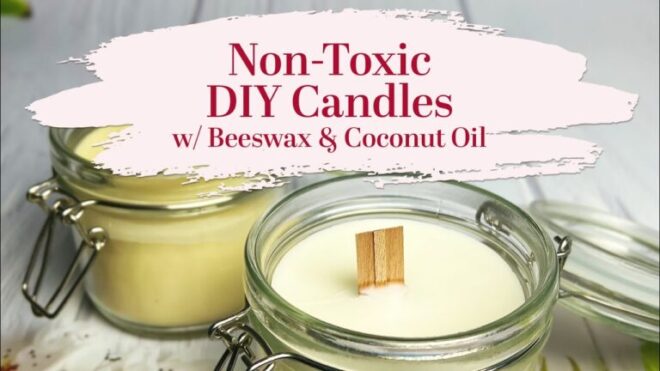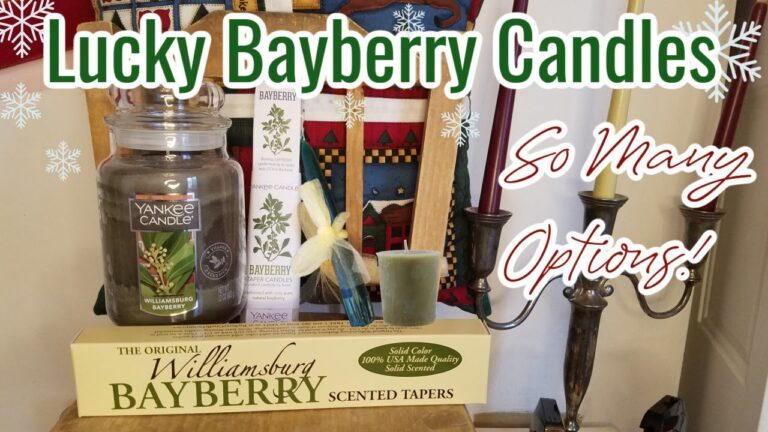Looking to elevate your candle crafting game? Look no further than organic ingredients. By incorporating natural, sustainable components into your candles, you can create beautiful, eco-friendly products that are both visually appealing and better for the environment. From soy wax to essential oils, organic ingredients offer a clean and healthy alternative for your candle-making endeavors. Dive into the world of organic candle crafting and discover the endless possibilities for creating unique and luxurious candles.
What organic compounds are found in candles?
Candles are made up of organic compounds such as paraffin, stearin, and beeswax. These materials are the key components used in candle production, with paraffin being the most commonly used, accounting for over 90% of the total production volume. Stearin is also used to some extent, while beeswax makes up approximately 1% of the materials used in candle production (Schiitz 1994).
Paraffin, stearin, and beeswax are the three main organic compounds found in candles. Paraffin is the most widely used material, making up the majority of the production volume. Stearin is also utilized in candle production, although to a lesser extent, while beeswax contributes about 1% to the total materials used (Schiitz 1994). These organic compounds play a crucial role in the creation of candles and contribute to their unique properties and characteristics.
The organic compounds found in candles are paraffin, stearin, and beeswax. These materials are essential for the production of candles, with paraffin being the primary component used in the majority of candle production. Stearin and beeswax also play a role, although to a lesser extent, with beeswax contributing approximately 1% to the total materials used (Schiitz 1994). These organic compounds are integral to the creation of candles and are responsible for their distinct qualities and functions.
What ingredients make up healthy candles?
Looking for a healthier alternative to traditional candles? Look no further! Non-toxic candles are the way to go, made with natural ingredients like soy, coconut, or beeswax, scented with essential oils, and featuring eco-friendly wicks. Say goodbye to harmful chemicals and hello to a cleaner, more sustainable way to enjoy your favorite scents at home.
When it comes to creating a soothing ambiance in your space, choosing non-toxic candles is key. Made from natural waxes and scented with pure essential oils, these candles offer a safer and healthier option for you and your loved ones. With wicks made from natural fibers like cotton or wood, you can enjoy the warm glow of a candle without any worries about harmful toxins.
What material makes the healthiest candle?
The healthiest candle material is typically considered to be soy wax. Soy candles are made from hydrogenated soybean oil, making them a natural and renewable resource. They produce less soot and toxins compared to paraffin candles, which are made from petroleum byproducts. Soy candles also have a longer burning time, making them a more eco-friendly option for indoor air quality.
Another healthy option for candles is beeswax. Beeswax candles are all-natural and emit a subtle honey scent when burned. They are non-toxic and hypoallergenic, making them a great choice for people with sensitivities to synthetic fragrances. Beeswax candles also burn longer than traditional candles, giving you more enjoyment for your money.
For those looking for a unique and sustainable option, coconut wax candles are a great choice. Coconut wax is made from the meat of coconuts and is a clean-burning alternative to traditional waxes. Coconut wax candles have a creamy texture and hold fragrance well, making them a luxurious and eco-friendly option for your home. With their natural origins and clean burn, coconut wax candles are a healthy choice for both you and the environment.
Eco-Friendly Candle Making: Using Organic Ingredients
Looking to create a more sustainable home environment? Dive into the world of eco-friendly candle making using organic ingredients. By choosing natural materials such as soy wax, essential oils, and cotton wicks, you can enjoy the cozy ambiance of candles while reducing your carbon footprint. Not only are these candles better for the environment, but they also provide a cleaner and healthier option for your living space. Embrace the art of candle making with a green twist and light up your home with eco-conscious creations.
Sustainable Crafting: Handmade Candles with Natural Elements
Indulge in the art of sustainable crafting with our handmade candles infused with natural elements. Each candle is carefully crafted with eco-friendly materials, ensuring a clean burn that is gentle on the environment. From soothing lavender to invigorating citrus, our candles are scented with pure essential oils for a truly immersive experience. Embrace the beauty of nature in every flicker of light with our sustainable handmade candles.
Crafting candles with organic ingredients not only benefits the environment but also enhances the quality of the final product. By choosing natural, sustainable materials, candle makers can create unique and eco-friendly products that appeal to conscious consumers. Embracing organic ingredients in candle crafting allows for a more mindful approach to creating beautiful, fragrant candles that bring joy and relaxation to those who use them. Make the switch to organic ingredients today and experience the difference in both your candles and the world around you.



